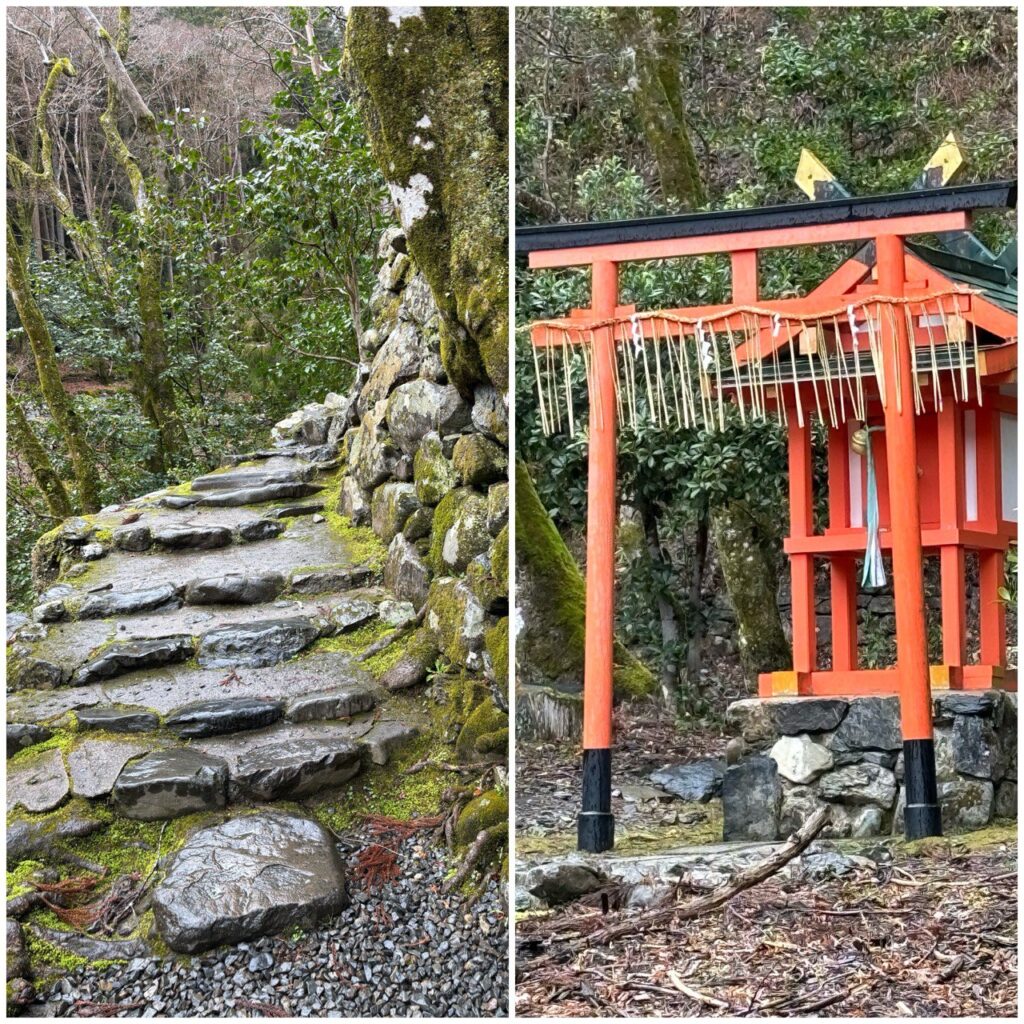In a Buddhist temple (with its elaborate architecture, the internal division of the enclosure into sections, etc.) the sacred is delimited by markedly human categories (Buddha of compassion, Buddha of wisdom, etc.), plus it is planned and organized. Conversely, a Shinto shrine (consisting of a small, red portico at the bend of a forest path, half-hidden in a grove of trees…) is a sign of the presence of the sacred that bursts in and comes out, that meets us: its delimitation is thus purely testimonial, the recognition of the sacred as an event that exceeds any human planning. ‘Aγχιβασίην… (Heraclitus, frag. DK 122, consisting of a single word): “To approach…”

(Photos taken by Carlos near Kōzan-ji Temple, outskirts of Kyoto, February 2024)
C.
